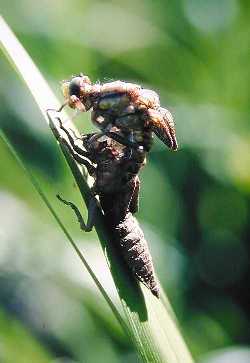Home → Water Quality → Monitoring & Reporting → Biomonitoring → Sampling & Analysis → Macroinvertebrate Types
 Benthic Macroinvertebrates
Benthic Macroinvertebrates
Benthic macroinvertebrates are insects and other animals without a back bone that can be seen without magnification and that live on the bottom of virtually all waterbodies. Although some of these animals spend their entire lives in the water, many of them grow up to be terrestrial insects that are familiar to most people.
Examples of the benthic macroinvertebrates found in Maine include:
- Flatworms (Turbellaria)
- Aquatic Earth Worms (Oligochaeta)
- Leeches (Hirudinea)
- Snails (Gastropoda)
- Clams & Mussels (Bivalvia)
- Mites (Acariformes)
- Aquatic Sow Bugs (Isopoda)
- Scuds (Amphipoda)
- Crayfish & Shrimps (Decapoda)
- Mayfly Larvae (Ephemeroptera)
- Dragonfly & Damselfly Larvae (Odonata)
- Stonefly Larvae (Plectopera)
- Dobsonfly & Alderfly Larvae (Megaloptera)
- Water Beetles (Coleoptera)
- Caddisfly Larvae (Trichoptera)
- True Fly Larvae (Diptera)
Benthic macroinvertebrates are useful indicators of water quality because they can be found in all but the most severely polluted or disturbed habitats and because they have a wide range of pollution tolerances amongst various species. This means that a benthic macroinvertebrate community will be composed of different species depending on the amount of exposure to pollution it receives. By identifying the relative abundances of species that are tolerant of pollution versus species that are intolerant of pollution, the Biological Monitoring Program gains valuable information about the impact of pollution and habitat disturbance on Maine's rivers, streams, and wetlands.
Please see the links below for more information on the Biological Monitoring Program's macroinvertebrate sampling sites, methods, and data analysis.
For a list of macroinvertebrate taxa that have been collected by the Biological Monitoring Program, click here.
For more resources on macroinvertebrates, please visit our Materials Page.
Picture key
Photo: An adult dragonfly emerging from its aquatic larval form.
Source: North American Benthological Society, www.benthos.org